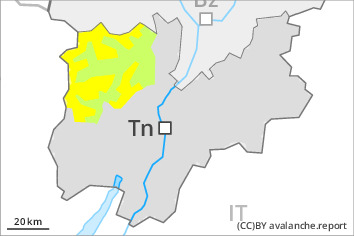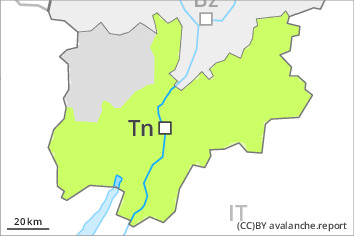
Danger level
 | 2400m |
|  |
|  |

Old wind slabs are to be evaluated with care and prudence.
The older wind slabs can still be released in some cases especially on very steep shady slopes above approximately 2400 m. Individual avalanche prone locations for dry avalanches are to be found adjacent to ridgelines and in gullies and bowls above approximately 2400 m. This applies in particular on steep shady slopes. Avalanches can reach medium size in isolated cases.
As a consequence of warming, the likelihood of moist loose snow avalanches being released will increase in particular on steep sunny slopes.
Snowpack
The fresh and somewhat older wind slabs are lying on soft layers in particular on near-ridge shady slopes at high altitudes and in high Alpine regions. The wind slabs are clearly recognisable. Snow depths vary greatly, depending on the infuence of the wind. Towards its base, the snowpack is faceted.
Low and intermediate altitudes: The snowpack is wet.
Tendency
The meteorological conditions will facilitate a gradual change towards better conditions.


